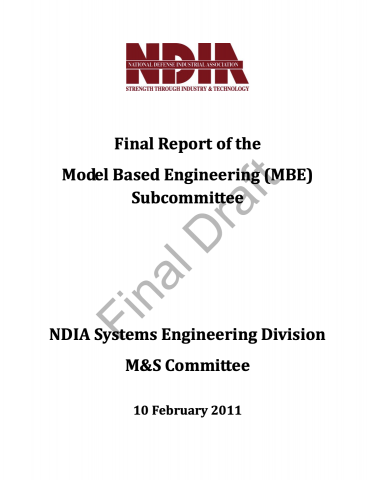The computational model contrasts with a human-interpretable descriptive model that is used to describe the system and design characteristics. A graphical modeling language with a formal syntax and semantics is typically used to represent the model. The model information is generally captured in a model repository provided by the modeling tool. Typical design models include a 3 dimensional geometric model of mechanical designs, schematic capture tools for electrical design, software design models represented in UML or AADL, and system architecture design models represented in SysML, UPDM, and others.
In addition to the model itself, a model is characterized by additional information sometimes referred to as metadata. This may include information on its version, intended purpose, scope of the model in terms of its depth, breadth, and fidelity, range of applicability, and modeling assumptions, as well as many other types of information. This information is essential for not only understanding the results from the model, but also for understanding the appropriateness of the model relative to addressing the specific concerns at hand.
The use of physical models such as wind tunnel models or other physical mockups and prototypes are extremely important and fundamental to engineering a product or capability. These models are considered part of MBE, and must be integrated with other computational and descriptive models. However, the focus of the recommendations is on enhancing the computational and descriptive modeling capability. Final
Defines standard
Replaced/Superseded by document(s)
Cancelled by
Amended by
| File | MIME type | Size (KB) | Language | Download | |
|---|---|---|---|---|---|
| MBE_Final_Report_Document_(2011-04-22)_Marked_Final_Draft.pdf | application/pdf | 4.29 MB | English | DOWNLOAD! |
Provides definitions
Introduction
Numerous recent studies and reports [3, 7, 8, 9, 10] have documented the increasing complexity of defense systems. The growth in complexity has increased risk and development time to the point where the time to field new systems and evolve existing systems is not acceptable. In addition, defense systems are operating in a rapidly changing environment, and the ability of systems to respond to those changes requires higher degrees of system adaptability. Traditional systems engineering methods, processes, and tools need significant improvement to meet the challenges posed by the increasing system complexity trend [10] , as do traditional software engineering methods [3]. Additionally, increasing complexity arising from the interdependence of large numbers of component suppliers is posing integration problems that challenge the limits of tradtional approaches [1].

